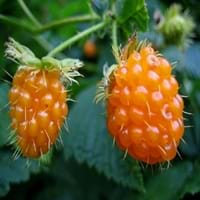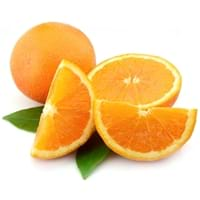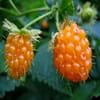Health Benefits
Cancer prevention, Improves stomach health, Weight loss properties
Arthritis treatment, Cancer prevention, Heart care
General Benefits
Anti oxidant properties, Digestive aid, Eye care, Healing of wounds, Improves eye vision, Maintains healthy cholesterol level, Strengthens bones
Anti-inflammatory properties, Cures cough, Cures fever, Digestive aid, Healing of wounds, Maintains healthy cholesterol level
Skin Benefits
Anti-aging benefits, Reduces wrinkles
Anti-aging benefits, Brightens and lightens complexion, Reduces wrinkles, Treatment of dark spots
Hair Benefits
Protects hair, Regulates hair growth
Promotes longer and healthier hair, Protects hair, Rejuvenates scalp, Shiny hair
Allergy Symptoms
Abdominal pains, Itching, Swelling of mouth, tongue or lips
Abdominal cramps, Hives, Itching, Nausea, Wheezing
Side Effects
Allergic reaction
Allergic reaction, Skin rash, Possibly unsafe during pregnancy
Best Time to Eat
Best if taken as a breakfast (or empty stomach), As a snack in the late afternoon, Don't eat after meal, Morning time (before lunch)
As a snack in the late afternoon, Eat the fresh ones, avoid mixing with any other foods, don't eat after meal., Morning time (before lunch), Strictly avoid empty stomach
Vitamin B5 (Pantothenic Acid)
Vitamin C (Ascorbic Acid)
Vitamin K (Phyllochinone)
Lutein+Zeaxanthin
Not Available
Calories in Fresh Fruit with Peel
Not Available
Calories in Fresh Fruit without Peel
Not Available
Calories in Frozen Form
Not Available
Not Available
Calories in Dried Form
Not Available
Calories in Canned Form
Not Available
Season
All seasons
Winter
Varieties
Golden ruby and Olympic Double
Clementine, Dancy, King Mandarin, Murcott, Ponkan, Robinson, Satsuma and Sunburst
Color
Pink, Pink red, Salmon, Salmon yellow
Orange
Origin
North America
South-Eastern Asia
Grows on
Trees
Not Available
Soil Type
Loam
Well-drained
Climatic Conditions
Moist
Sunny
Facts about
- The name salmon berry is due of the resemblance with 'salmon roe'.
- In 1 kg of fruit, there are total 315,250 seeds.
- Salmon berry tree leaves act as an excellent replacement for tea.
- It is known by another name ' Mandarin'.
- Oil extracted from its peel is used in various skin and hair care products.
- Tangerines is also known as the ‘Christmas Orange’ because it is used to stuff kids' stockings..
Wine
Not Available
Not Available
Beer
Not Available
Not Available
Spirits
Not Available
Not Available
Cocktails
Not Available
Not Available
Top Producer
United States of America
China
Other Countries
Canada, Mexico
Brazil, Iran, Italy, Japan, Korea, Morocco, Spain, Turkey
Top Importer
Not Available
China
Top Exporter
Not Available
Spain
Botanical Name
Rubus spectabilis
Citrus reticulata
Synonym
Not Available
Citrus clementina or Citrus nobilis
Subkingdom
Tracheobionta
Tracheobionta
Division
Magnoliophyta
Magnoliophyta
Class
Magnoliopsida
Magnoliopsida
Species
R. spectabilis
C. reticulata
Generic Group
Not Available
Citrus fruit
Difference Between Salmonberry and Tangerine
We might think that Salmonberry and Tangerine are similar with respect to nutritional value and health benefits. But the nutrient content of both fruits is different. Salmonberry and Tangerine Facts such as their taste, shape, color, and size are also distinct. The difference between Salmonberry and Tangerine is explained here.
The amount of calories in 100 gm of fresh Salmonberry and Tangerine with peel is 47.00 kcal and Not Available and the amount of calories without peel is Not Available and 53.00 kcal respectively. Thus, Salmonberry and Tangerine belong to Low Calorie Fruits and Low Calorie Fruits category.These fruits might or might not differ with respect to their scientific classification. The order of Salmonberry and Tangerine is Rosales and Sapindales respectively. Salmonberry belongs to Rosaceae family and Tangerine belongs to Rutaceae family. Salmonberry belongs to Rubus genus of R. spectabilis species and Tangerine belongs to Citrus genus of C. reticulata species. Beings plants, both fruits belong to Plantae Kingdom.









